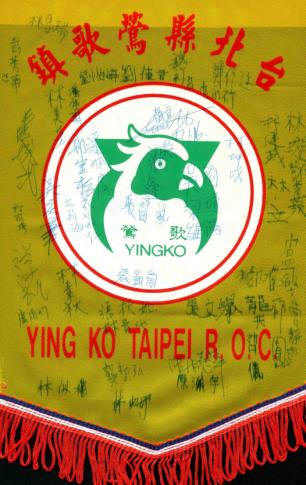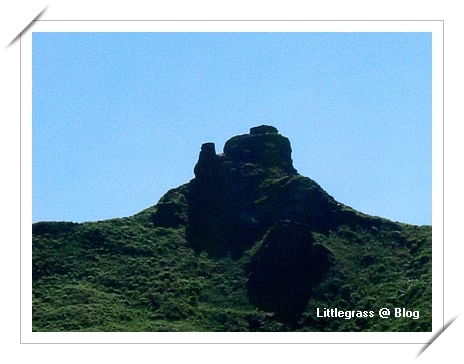UDN came up with this interesting list of some place names in northern Taiwan and their origins. Here’s my English version.
You’ll notice that Chinese place names like to use geogrpahic cues more than anything else. While we do have a share of these in the US (Boulder, Oceanside), we tend to prefer personal names (Washington, Bismark, San Anyone). I wonder it would be like if Taiwan did things the same way…
Taipei
[ul]1: Shilin: The area was home to a large number of schools and academies during the late Qing years, earning it the name “a forest of scholars”-- 士子如林, abbreviated to 士林 [/ul]
[ul]2: Beitou: This is a Sinification of the word for “witch” in the language of the Pingpu people, the original inhabitants of the area. Legend has it a witch lived here.[/ul]
[ul]3: Neihu: Nei (內) means inland, while Hu (湖) refers to sunken lands, valleys, or depressions, which filled with water easily. Hence the Hu does not refer to any specific lake, but rather means “Inland Puddles.” [/ul]
[ul]4: Wanhua: This one’s complicated.it was originally called Banka, the Ketagalan word for “the place where wood canoes gather,” because they would load their fish and vegetables onto boats here to wade down the river and trade with the Chinese population. Chinese settlers chose the Chinese name 艋舺 (Taiyu prounciation: Báng-kah), and the Japanese kept that pronunciation but changed the characters to 萬華, pronounced in Japanese as “banka” and in Mandarin as “Wanhua.” When the ROC took control of Taiwan from the Japanese, they kept the characters and just used Mandarin to pronounce them.[/ul]
[ul]5: Wufenpu: This place name literally means “clearing split into five.” The five in question refer to five families who divied up the land and began developing it: He, Zhou, Shen, Du, and Li families[/ul]
New Taipei
[ul]1: Tucheng: The name, literally “earthen walls,” refers to defensive walls built by Chinese settlers to defend against the native population.[/ul]
[ul]2: Sanxia: “Three Gorges” (三峽) refers to its location at the intersection of the Dahan River, Heng River, and Sanxia River. It was originally named 三角湧 (Surging Three Corners) – Sann-kak-íng in Taiyu. The Japanese maintained a similar pronunciation (Sankyou) and changed the cjaracters to 三峽 to reflect that Japanese pronunciation. [/ul]
[ul]3: Shimen: “Stone Gate,” named after the eye-catching rock formation on Taiwan’s north coast that has a door-like hole in the middle of it. Pretty straightforwad.[/ul]
[ul]4: Banqiao: the name means “Plank bridge,” and refers to an unknown bridge that crossed a river. The Japanese changed the characters from 枋橋 (Pang-kiô) to the present 板橋 (same pronunciation in Taiyu)[/ul]
[ul]5: Taishan: Originally named Ding Tai Shan Yan after an 18th century home in the area (頂泰山巖, today located at Yinghua St No. 32), it was renamed to just Taishan, apparently, because the entire Taipei Basin is visible from atop the mountain. This made learned people of the past think of the saying “The world is small from atop (China’s) Mt Tai” (登泰山而小天下).[/ul]
[ul]6: Xindian: The area was devastated by a flood in the early 19th century, but managed to prosper after being rebuilt. It was therefore christened the town of “New Shops” (新店).[/ul]
[ul]7: Shulin: This isn’t even a challenge. It literally means “forest.”[/ul]
[ul]8: Yingge: Now written 鶯歌 (oriole song), it was originally called the homophonous name 鸚哥 (parrot) after a rock that supposedly looked like… a parrot.[/ul]
[ul]9: Pingxi: “Calm River” or “Mild River” as the waters here aren’t very intense.[/ul]
[ul]10: Shenkeng: “Deep Ravine,” since it’s located in a valley[/ul]
[ul]11: Linkou: “Forest Mouth” i.e. the entrance to a forest. This was originally called 樹林口, because there were lots of trees.[/ul]
[ul]12: Xizhi: “Tide’s End.” It was originally called 水返腳 and was given the more poetic name 汐止 later on. The name comes from how waters would hit the banks of the river when swelling and just come right back.[/ul]
[ul]13: Shiding: 石 is stone, and 碇 is the Taiwanese term for the high stone threshold in the doorway of old homes. It is named after the large flat stones in the river.[/ul]
More to come later.


 It is named after how this rock looks like.
It is named after how this rock looks like.


